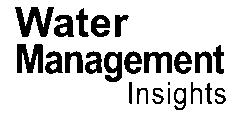The pharmaceutical water market is experiencing a significant surge, driven by the escalating demand for high-purity water in drug manufacturing and the tightening of regulatory standards. Valued at US$ 37.1 billion in 2023, the market is projected to expand at a compound annual growth rate (CAGR) of 8.3% from 2024 to 2034, reaching US$ 89.9 billion by 2034. This growth is not just a number; it reflects a profound shift in how the pharmaceutical industry approaches water management, prioritizing purity and safety above all else.
The pharmaceutical water market is integral to the production of medicines, vaccines, and injectable drugs, where purity and safety are paramount. As regulations tighten globally, the need for pharmaceutical-grade water, including Water for Injection (WFI) and Purified Water, has surged. Manufacturers are focusing on advanced filtration and treatment technologies to meet these stringent pharmaceutical requirements. The growing reliance on WFI and purified water for drug production, combined with increased biopharmaceutical research, creates favorable conditions for market growth. The expansion of research and development (R&D) in biologics, vaccines, and precision medicine, especially post-pandemic, has heightened demand for pharmaceutical-grade water, making it a critical element in the production of life-saving drugs.
Regulatory compliance is a central component of the pharmaceutical water industry. Organizations such as the U.S. FDA, European Medicines Agency (EMA), and World Health Organization (WHO) have set guidelines to ensure the quality of pharmaceutical water used in drug production. These regulations are primarily designed to minimize the risk of contamination, ensuring the safety and efficacy of the drugs produced. For instance, WFI must be free of endotoxins, chemicals, and microorganisms, making purification technologies like reverse osmosis (RO) and ultrafiltration indispensable in this industry.
The growing demand for biologics and biosimilars has further increased the need for high-purity water. As drug development continues to shift toward personalized medicine, the pharmaceutical water market is expected to see a rise in demand for specialized treatment systems. Furthermore, the need for sustainability in water management is also gaining traction as pharmaceutical companies seek to reduce water waste and energy consumption in production processes.
Several companies dominate the pharmaceutical water industry, offering innovative solutions to meet regulatory standards and ensure water quality. Leading players include Eurocrit Labs International, Evoqua Water Technologies, Veolia Water Solutions and Technologies, Thermo Fisher Scientific Inc., B. Braun Medical Inc., ICU Medical, Inc., SteriCare Solutions, Danaher Corporation (Cytiva), ROCKY MOUNTAIN BIOLOGICALS, Veltek Associates, Inc., Sigma-Aldrich (Merck KGaA), and Corning Incorporated. These companies are working to develop advanced water purification systems that can meet the rigorous standards required by the pharmaceutical industry. They provide systems that ensure high-purity water for the production of injectables, vaccines, and other critical drugs. These market leaders focus on membrane filtration, UV sterilization, and smart monitoring to improve water treatment processes, ensuring both quality and efficiency.
The pharmaceutical water market has been witnessing several developments aimed at addressing the increasing demand for high-purity water and ensuring compliance with international quality standards. Noteworthy developments include membrane-based purification systems, zero-liquid discharge (ZLD) systems, and AI-driven water quality monitoring. The rise of reverse osmosis (RO) and ultrafiltration (UF) has made it easier to produce pharmaceutical-grade water by removing contaminants and microorganisms. These systems are increasingly favored for their efficiency in achieving water purity. ZLD systems help pharmaceutical companies minimize water waste, and AI-based monitoring and automation transform how pharmaceutical water quality is controlled.
The ongoing rise in demand for biologics and biosimilars, along with the significant focus on vaccine production in the post-pandemic era, has drastically increased the need for pharmaceutical water. This has led to an increase in the number of water purification systems implemented in pharmaceutical manufacturing facilities.
The growth of the pharmaceutical water market is primarily driven by these technological advancements, along with the increasing need for regulatory compliance. Several key trends are shaping the future of the pharmaceutical water market. These include the rise in biopharmaceuticals production, sustainability and green chemistry, personalized medicine, and smart water treatment solutions. The growing demand for biologic drugs is one of the biggest driving factors behind the increase in pharmaceutical water usage. As the production of biologics expands, companies are increasingly relying on high-purity water to ensure the safety and efficacy of their products. The push towards sustainable water management and green chemistry is leading to a reduction in water wastage. Companies are adopting eco-friendly purification methods such as membrane bioreactors (MBRs) and ozone-based disinfection systems.
How might this news shape development in the sector? The escalating demand for high-purity pharmaceutical
